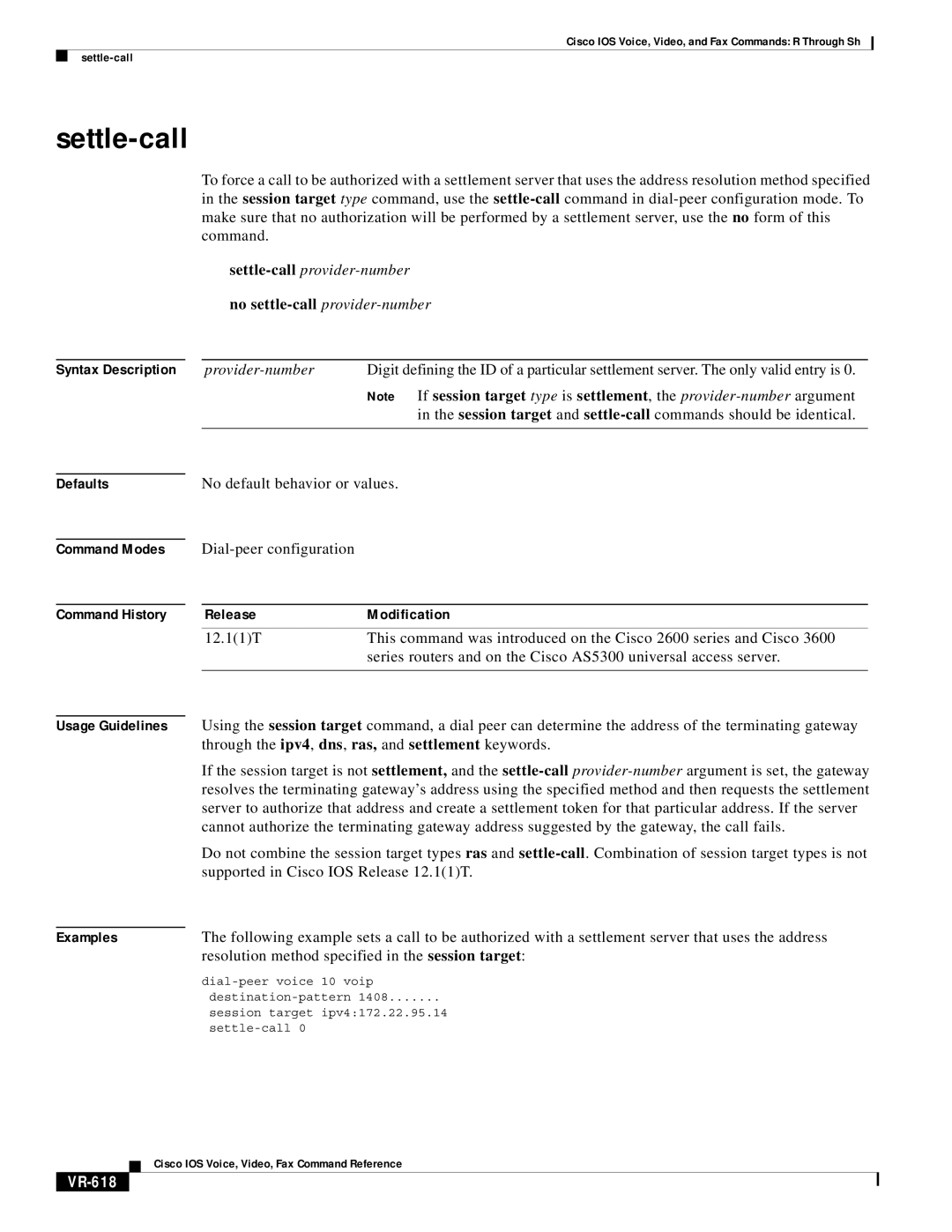
Cisco IOS Voice, Video, and Fax Commands: R Through Sh
settle-call
To force a call to be authorized with a settlement server that uses the address resolution method specified in the session target type command, use the
no settle-call provider-number
Syntax Description | Digit defining the ID of a particular settlement server. The only valid entry is 0. |
Note If session target type is settlement, the
Defaults | No default behavior or values. |
Command Modes
Command History
Release | Modification |
12.1(1)T | This command was introduced on the Cisco 2600 series and Cisco 3600 |
| series routers and on the Cisco AS5300 universal access server. |
|
|
Usage Guidelines | Using the session target command, a dial peer can determine the address of the terminating gateway |
| through the ipv4, dns, ras, and settlement keywords. |
| If the session target is not settlement, and the |
| resolves the terminating gateway’s address using the specified method and then requests the settlement |
| server to authorize that address and create a settlement token for that particular address. If the server |
| cannot authorize the terminating gateway address suggested by the gateway, the call fails. |
| Do not combine the session target types ras and |
| supported in Cisco IOS Release 12.1(1)T. |
|
|
Examples | The following example sets a call to be authorized with a settlement server that uses the address |
| resolution method specified in the session target: |
| |
| |
| session target ipv4:172.22.95.14 |
|
Cisco IOS Voice, Video, Fax Command Reference
